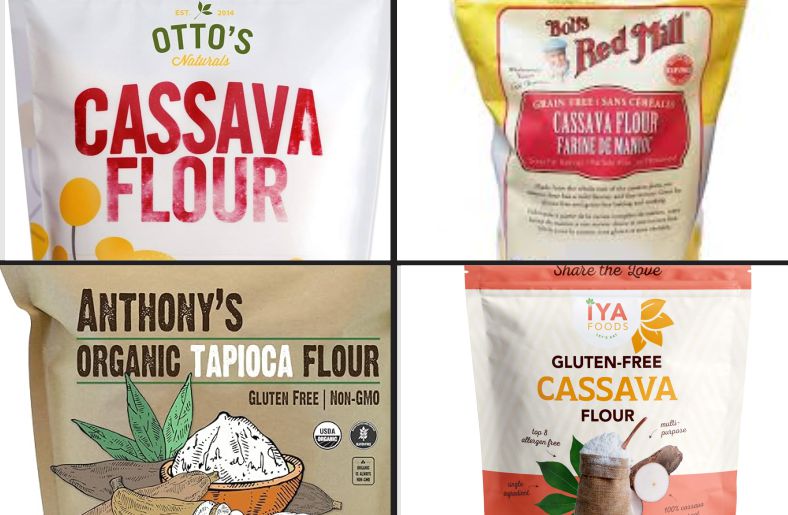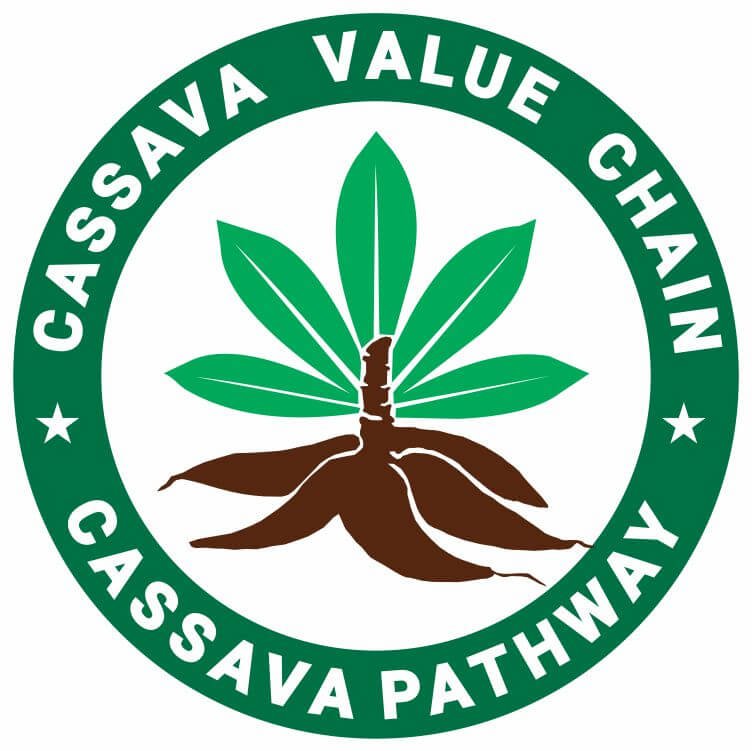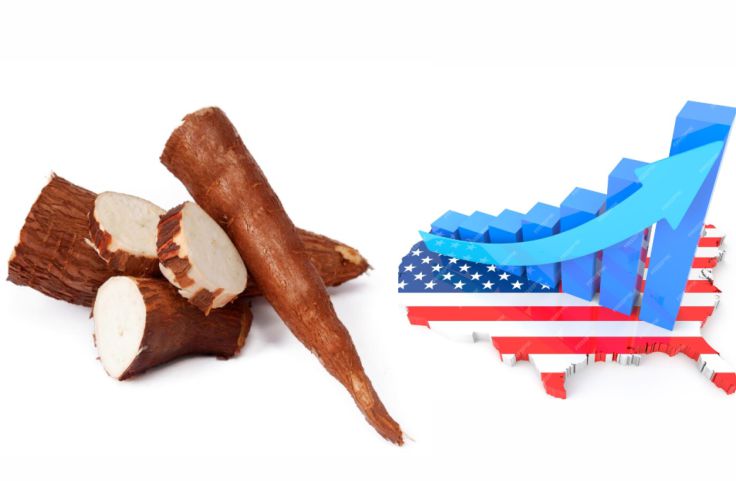Is cassava a good cash crop in the U.S. market? Learn what farmers, entrepreneurs, and investors should know about its potential, challenges, and growing demand across niche and industrial markets.
You might be wondering if the cassava crop is a good cash crop in the U.S. market, if you’re looking for a crop that can handle drought, poor soil, and changing weather patterns.
Cassava is already a major staple across Africa, Asia, and South America, feeding millions and fueling industries with its starch, flour, and animal feed.
Now, interest is rising in the United States, driven by the search for gluten-free alternatives, new farming options, and crops that can survive where others fail.
As more farmers and agripreneurs ask if cassava is worth growing, it’s important to look at the full picture, how well it grows, who will buy it, and whether the numbers make sense.
If you’re thinking about farming cassava or investing in it, this is where you start.
Let’s break it down.
Recommended: How Does Cassava Hold Up in the United States?
Table of Contents
- To Answer the Question – Is Cassava a Good Cash Crop in the U.S. Market?
- An Overview of Cassava as a Crop
- Current State of Cassava Farming in the U.S.
- Cassava Demand and Market Opportunities in the U.S.
- Profitability Analysis
- Regulatory and Logistical Considerations
- Opportunities for Agripreneurs and Investors
- Challenges and Risks
- Frequently Asked Questions about Cassava as a U.S. Cash Crop
- Conclusion
To Answer the Question – Is Cassava a Good Cash Crop in the U.S. Market?
Cassava has the potential to be a good cash crop in the U.S. if you’re farming in the right climate and have a market strategy in place.
In areas like Florida, Puerto Rico, and parts of Texas, cassava can grow well and meet the increasing demand for gluten-free, clean-label, and culturally relevant food products.
It’s also gaining attention in industrial sectors for its starch. Still, challenges like climate sensitivity, limited processing infrastructure, and competition from imports make it a complex choice.
If you can handle the growing conditions and navigate the supply chain, cassava may offer a new opportunity for profit and market entry in the U.S. food and agribusiness sectors.
Related: Why Cassava is not Mainstream in the United States
An Overview of Cassava as a Crop
Before we go into whether cassava is a good cash crop in the United States, let’s have an overview of what cassava is for new readers of this website.
Cassava is a drought-tolerant root crop native to South America and widely grown for its starchy tubers.
It plays a central role in food security across Africa, Asia, and Latin America, serving both as a staple food and an industrial raw material.
Beyond consumption, cassava is used in starch production for food, textiles, pharmaceuticals, and ethanol-based biofuels.
It’s also processed into animal feed, increasing its market value.

Nigeria is the world’s largest cassava producer, followed by Thailand and Brazil, with each country capitalizing on favorable climates and exporting processed products to meet global demand.
Cassava thrives in tropical and subtropical climates with temperatures between 25 and 30°C. It grows best in well-drained, loamy soils rich in organic matter.
Although it needs water during early growth, it tolerates dry conditions once established.
Its resilience and multi-purpose use make cassava an attractive option for farmers seeking a dependable and profitable cash crop.
Related Posts
How to Grow Cassava in Florida
Introduction to Cassava Entrepreneurship
Cassava Flour Production Business
How to Export Cassava from Africa
How to Profit from the Cassava Value Chain
How to Start Commercial Cassava Farming
Current State of Cassava Farming in the U.S.
Cassava is gaining attention in the U.S., especially in Florida, Texas, and Puerto Rico, areas with warm climates that support its growth.
Southern Florida offers ideal year-round conditions, while parts of Texas have shorter growing windows due to frost risk.
Puerto Rico has long included cassava in its agricultural systems. Still, scaling cassava farming is tricky.
The plant struggles in cold weather, and even one frost event can damage a crop. In northern Florida and eastern Texas, this is a serious concern.
Cassava also faces threats from pests and diseases, and access to disease-resistant varieties and effective pest control is limited.
Most farms are small and experimental, but interest is rising.
Agricultural institutions are testing new varieties and soil strategies.
As demand grows for gluten-free and alternative starches, cassava could become a bigger part of American agriculture.
If you’re a grower or investor, this may be a good time to watch it closely. See more on how cassava grows in the United States.
Related: Cassava Bags Viability, Growth, and Challenges
Related: Cassava and the American Gluten-free Lifestyle
Cassava Demand and Market Opportunities in the U.S.

Cassava is gaining traction in the U.S. as more people turn to gluten-free options and industries seek natural raw materials.
Here’s how it’s carving out space in food and beyond.
Cassava and the Gluten-Free Market
If you’re in the gluten-free space, cassava flour is something you can’t ignore.
It’s becoming a popular ingredient in bread, crackers, and baking mixes.
Health-conscious consumers and those with gluten intolerance are always on the lookout for clean-label alternatives, and cassava fits that need.
Its neutral flavor and fine texture make it a favorite among home bakers and food manufacturers alike.
This growing demand is opening new doors for processors and suppliers ready to meet it.
Ethnic Food and Cultural Demand
Cassava is already a staple in African, Asian, and Latin American households.
With these communities expanding across the U.S., the demand for cassava-based foods is rising too.
You’ll see cassava chips, gari, and frozen roots showing up more in ethnic grocery stores and supermarkets in big cities.
If you’re in food retail or distribution, this is a market worth paying attention to.
Cultural familiarity drives consistent sales.
Industrial Uses and Green Innovation
Cassava’s value doesn’t stop at food. It’s making its way into industrial markets, too.
Its starch is being tested in biodegradable packaging and biofuels, which makes it attractive to companies focused on clean energy and sustainable production.
If you’re in agribusiness or manufacturing, cassava could give you a raw material that meets both performance and sustainability goals.
With more R&D in this space, cassava’s non-food market potential keeps growing.
Related: How to Market Cassava for Profitability
Profitability Analysis
Thinking about cassava as a cash crop? Before you jump in, it’s worth taking a close look at what it costs to grow and what you can earn from it in the U.S.
Labor and Land Costs Shape Your Bottom Line
Cassava farming relies on manual work, especially during planting and harvesting.
Unlike soy or corn, which benefit from full mechanization, cassava still needs hands in the field.
That means higher labor costs per acre. Land prices also vary across states.
In places like Florida or Texas, where cassava can grow, land might be costly, pushing up your investment.
If you’re in a location with affordable land and access to labor, you may have an edge.
Input Costs and Yield Potential
You’ll need to factor in inputs like fertilizers and pest control. Cassava isn’t maintenance-free.
While the crop can handle dry spells, it still needs good soil management to produce healthy roots.
Compared to well-supported crops like soybeans, cassava may seem riskier.
But in the right climate with proper care, it can offer strong yields that make your investment worthwhile.
Infrastructure and Supply Chain Gaps
One challenge you’ll face is getting cassava processed and to market.
Unlike corn or wheat, cassava lacks a fully developed supply chain in the U.S. Fresh cassava also spoils quickly, which means you need nearby buyers or processing centers.
If you plan to grow at scale, consider partnering with food businesses or processors who specialize in cassava flour or chips. Building these relationships early can improve your margins.
Export Opportunities and Niche Markets
Cassava products are in demand overseas, especially in gluten-free and alternative starch markets.
If you can process and store cassava effectively, you may be able to tap into export channels.
There’s also growing domestic demand for cassava-based foods.
Health-conscious consumers are pushing demand for gluten-free flour, and that gives you a chance to sell at premium prices.
You just need the right buyers and strategy in place.
Related: Why Americans Need Cassava
Regulatory and Logistical Considerations
Before you grow or process cassava in the U.S., you need to know the rules.
From food safety to shipping, each step has its own set of expectations.
USDA and FDA Rules for Cassava Handling
Cassava contains natural compounds that can be harmful if not processed properly.
That’s why the USDA and FDA have guidelines in place. If you’re selling cassava, especially fresh roots, you need to meet food safety standards that focus on cyanide levels.
Proper processing removes these compounds, but the rules are strict.
If you plan to sell to food manufacturers or retailers, you’ll need to prove your cassava meets these safety requirements.
Storage and Transport Can Affect Quality
Fresh cassava spoils quickly, sometimes within a few days. If you’re growing or distributing it, you’ll need to act fast.
Transport should be temperature-controlled to keep the roots from rotting.
Processed cassava products like flour or chips last longer, but they also need dry, cool storage to stay mold-free.
If you cut corners here, your product may not reach the buyer in good shape.
Limited Equipment Slows Down Efficiency
Most cassava equipment is made for large farms in Asia or Africa.
In the U.S., finding tools for peeling, grating, or pressing cassava can be tough. If you’re starting out, this could slow down your entire process.
You might need to import machines or work with fabricators to modify what’s available.
Without the right equipment, it’s hard to scale your farm or meet growing demand.
Think long-term before investing.
Opportunities for Agripreneurs and Investors
Thinking of getting into cassava farming or processing? If you’re looking for a crop with strong demand and room to grow in the U.S. market, cassava might be the right fit.
Organic Cassava for Health-Conscious Consumers
If you’re targeting the organic market, cassava gives you a solid entry point.
Organic cassava roots can be turned into flour that meets the needs of gluten-free and clean-label shoppers.
More people are baking at home or choosing food brands that focus on simple ingredients.
You can build a business around organic cassava flour and supply health food stores, farmers markets, or even direct-to-consumer platforms.
The demand is growing, and few players are meeting it locally.
Local Processing for Gluten-Free Flour
You don’t need to run a massive factory to start processing cassava.
A small, local setup that turns roots into gluten-free flour can fill gaps in the market.
Many food producers want reliable sources of cassava flour for baked goods and snacks.
If you can supply consistent quality, you’ll find buyers.
The key is having enough roots, good equipment, and a clear distribution plan.
Ethnic Food Partnerships Drive Steady Sales
Cassava is already popular in African, Asian, and Latin American communities.
If you partner with ethnic grocers, restaurants, or food distributors, you tap into a market that knows what cassava is and buys it regularly.
Building relationships with these businesses can help you move products quickly and get useful feedback on what people want.
It also makes your supply chain more stable and predictable.
Local Sourcing Builds Customer Trust
If you’re growing and processing cassava in the U.S., you can use that to your advantage.
Many customers are looking for food that’s grown close to home.
You can position your product as fresh, reliable, and made with care.
That story adds value and builds loyalty, especially in local markets where people want to support real farmers and producers.
Your location becomes part of your brand.
Challenges and Risks
If you’re thinking about growing cassava in the U.S., it’s important to know the roadblocks ahead.
From climate issues to market access, these challenges can affect how far your investment goes.
Climate Fit Is Still a Question
Cassava thrives in tropical and subtropical areas, so growing it in the U.S. can be tricky.
While parts of Florida, Texas, and Puerto Rico have the right temperatures, the weather can still be unpredictable.
Drought, irregular rainfall, or surprise cold snaps can put your crop at risk.
You’ll need to plan around these conditions, which means smart planting schedules and some backup strategies if the climate does not cooperate.
Pests and Diseases Need Attention
Cassava may be tough, but it’s not immune to pests and disease.
Mealybugs, bacterial blight, and cassava mosaic virus are serious threats that can damage your yields.
Managing them takes effort, and finding the right tools or trained professionals isn’t always easy.
If you’re new to cassava, learning how to spot and handle these problems early will help keep your crop healthy and productive.
Lack of Local Support Slows Learning
Unlike traditional U.S. crops like corn or wheat, cassava doesn’t come with strong extension services or wide technical support.
That means you may struggle to find experts who can help with soil prep, pest control, or harvesting tips.
If you’re serious about growing cassava, you’ll need to do your research or connect with research institutions that are testing it.
Without this guidance, mistakes become costly fast.
Market Access Is Still Limited
Even if you grow a great cassava crop, selling it may be harder than expected.
Imported cassava products already serve ethnic food markets at lower prices.
Meanwhile, crops like soybeans and corn have established buyers, supply chains, and subsidies.
Cassava doesn’t. If you’re planning to grow it commercially, you’ll need a clear plan for who will buy it, how you’ll get it there, and what makes your product stand out.
Frequently Asked Questions about Cassava as a U.S. Cash Crop
Is cassava profitable to farm in the U.S.?
Yes, it can be, especially if you’re selling to gluten-free food makers, ethnic grocers, or industrial buyers. But profitability depends on location, yield, processing access, and market demand.
Who buys cassava in the U.S. market?
Buyers include food processors, ethnic markets, gluten-free product manufacturers, and industrial firms looking for biodegradable starch or biofuel inputs.
What makes cassava attractive compared to other cash crops?
Cassava offers entry into fast-growing sectors like gluten-free foods and clean-label products. It also requires fewer chemical inputs in warm climates, lowering production costs.
Why isn’t cassava more common in U.S. farming?
Limited infrastructure, short shelf life, and lack of local equipment make large-scale cassava farming harder than mainstream crops like corn or soy.
Conclusion
Cassava has growing potential as a cash crop in the U.S., especially if you’re focused on niche or emerging markets.
While it’s not yet mainstream like corn or soybeans, the rising demand for gluten-free, clean-label, and culturally familiar foods gives cassava a valuable edge.
The profit opportunity lies in direct-to-consumer sales, ethnic market distribution, or partnerships with food and industrial processors.
Still, success depends on smart planning, finding the right buyers, managing supply chains, and securing tools for processing.
If you’re a farmer, agripreneur, or investor willing to lean into market gaps and solve logistical challenges, cassava can be more than an experiment.
It can be a smart business move.
References

